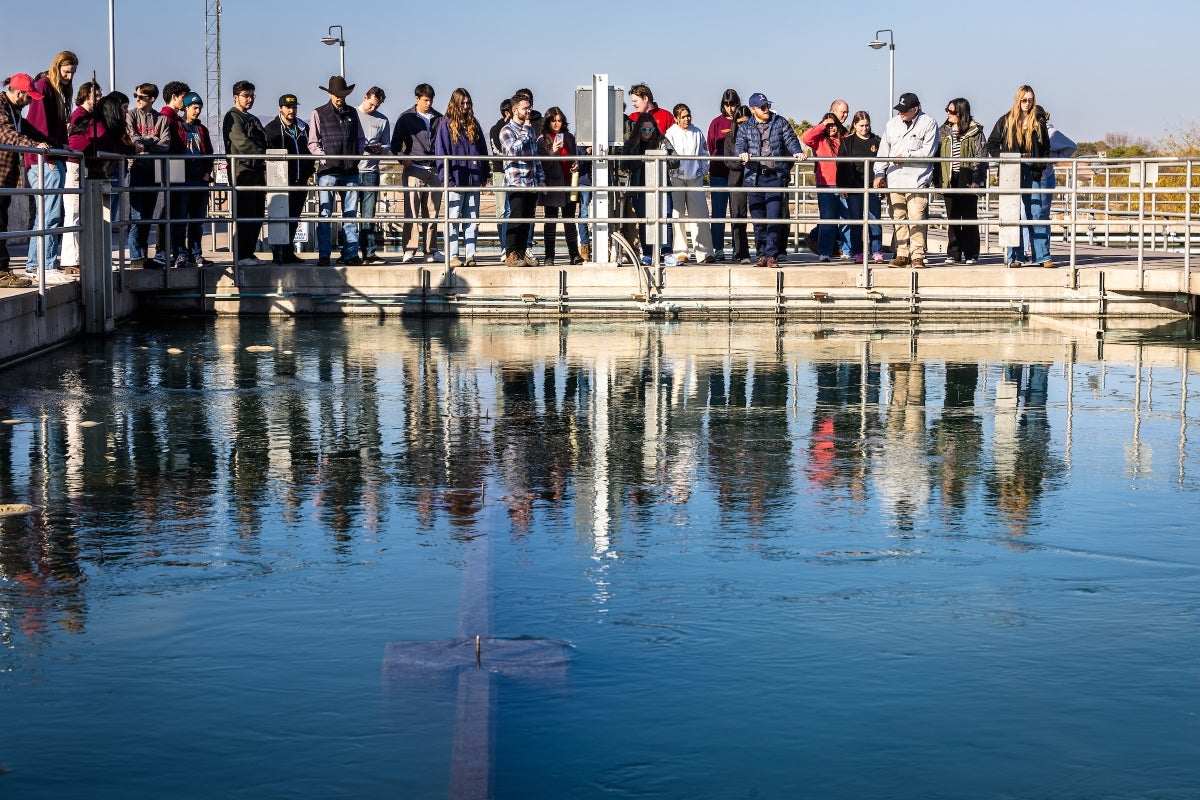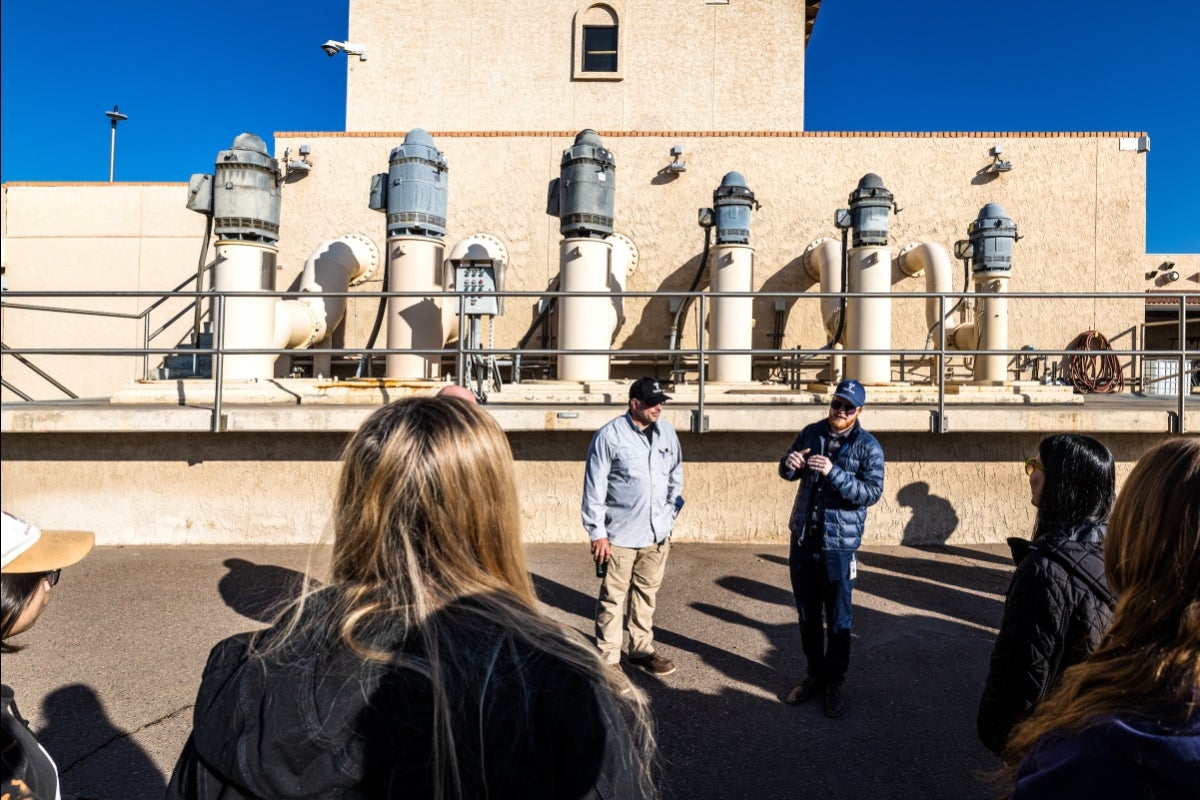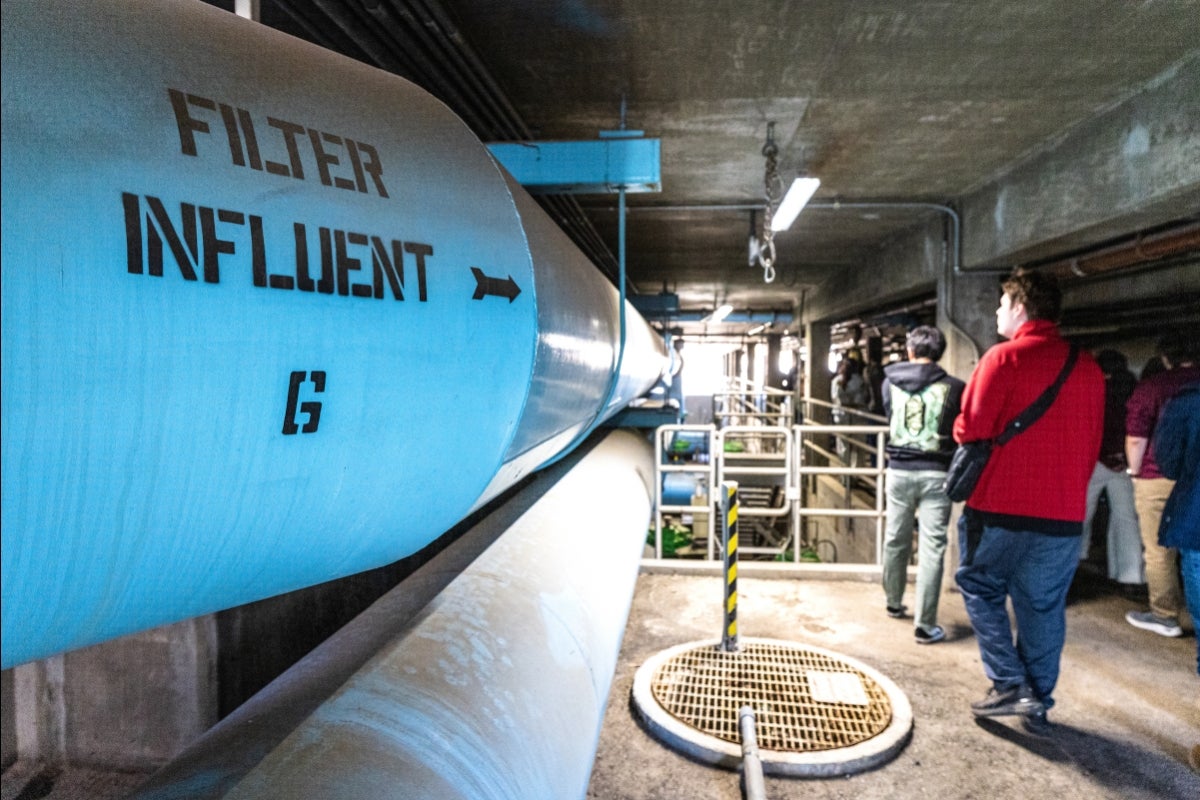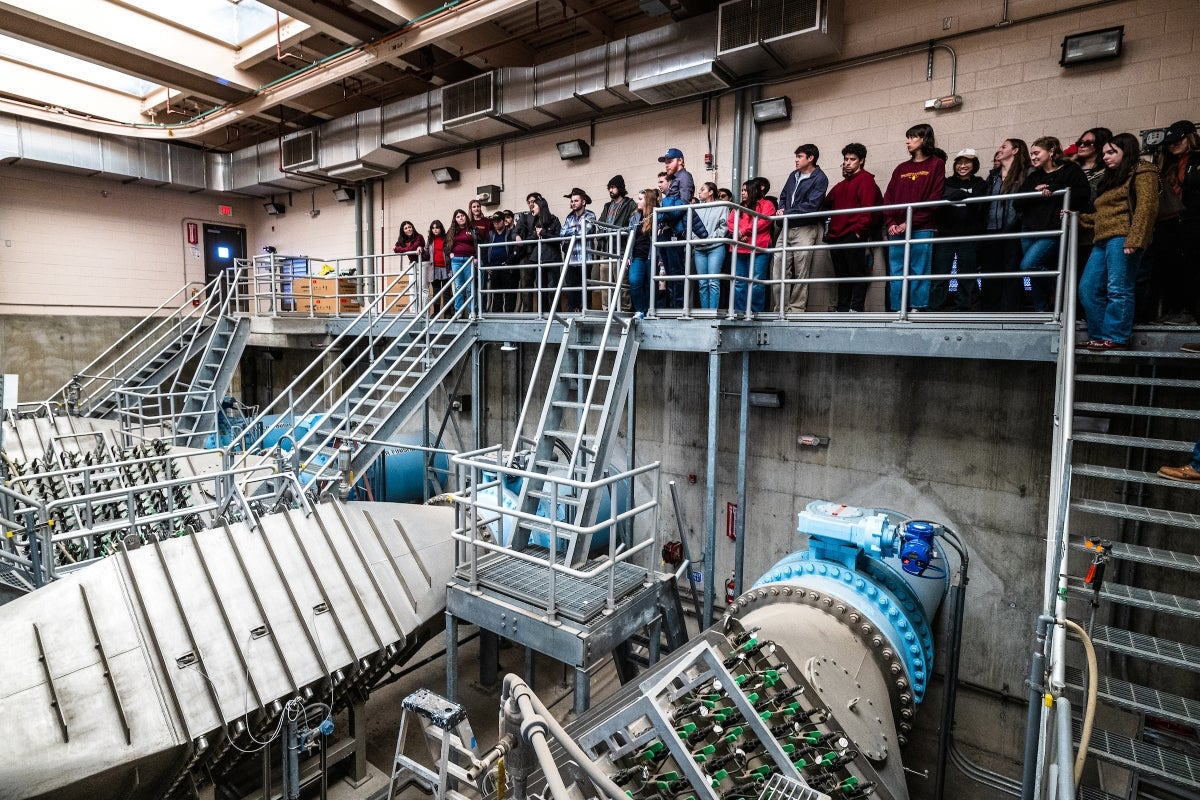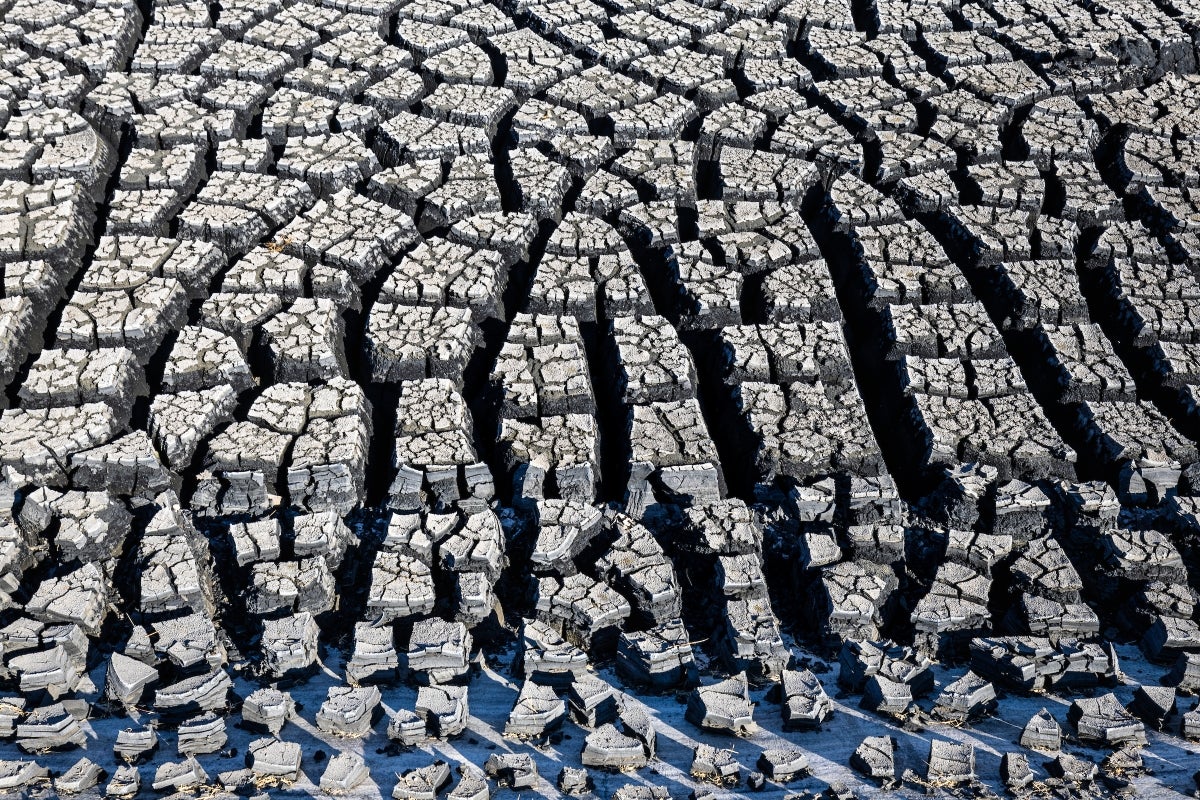From sludge to solutions: ASU students collaborate with city of Tempe on water treatment

City of Tempe civil engineer James Arndt (left) talks to nearly 40 chemical engineering students as they tour the South Tempe Water Treatment Plant on Friday, Jan. 31, as part of an ASU Project Cities' collaboration. Photo by Charlie Leight/ASU News.
Over the years, Arizona State University’s Project Cities has provided local communities and municipalities with expertise on sustainable solutions for parks, design research, solid waste, general plans and more.
This year, one of the student-led projects will venture into water treatment waste and diversion.
Approximately 40 chemical engineering capstone students paid a visit to Tempe’s Water Utilities Division on Jan. 31 to explore ways to divert waste water solids, also known as sludge, from landfills.
Bryce Askew had never been to a water treatment facility before but was excited to get started on the semester-long project.
“I was thinking before I got here that I took a shower this morning and the water that I used was probably here first,” said Askew, a fourth-year student in the Ira A. Fulton Schools of Engineering. “It’s cool to see the whole process from beginning to end.”
The capstone is a confluence of effort by the university and community for mutual benefit, said Julia Davis.
“Project Cities works on a wide variety of city-identified projects focused on energy to water to transit,” said Davis, senior program manager for Project Cities. “This project is exciting because students will be leveraging course material they’ve learned in their chemical engineering program over the past few years to be able to develop scientifically grounded solutions to solve a challenge the city has faced for years.”
Davis said since the program started in 2017, Project Cities has facilitated more than 120 projects with 15 community partners throughout Arizona. She added that Project Cities is also currently working with the city of Chandler, city of Mesa, city of Tolleson, city of Kingman, town of Miami, town of Clarkdale, and town of Camp Verde on a variety of projects focused on topics including sustainable landscape management, libraries, communications, healthy aging, art in public places, and green infrastructure.
Read more about Project Cities
• ASU class helps small Arizona town with tourism, retention planning
• Landscape architecture student creates xeriscape designs for city of Phoenix
• ASU student project recognized for work with town of Clarkdale
In June 2024, the city of Tempe entered into a three-year intergovernmental agreement with ASU Project Cities. Their first challenge will be to develop and propose solutions for diverting sludge from landfills. The students will leverage what they have learned throughout their chemical engineering coursework to propose solutions for the city to safely dispose of — or even repurpose — the sludge in creative, innovative and efficient ways.
Wydale Holmes, strategic management and innovation director at the city of Tempe, said the municipality is not only excited about the partnership, but eager to find solutions to several projects and save taxpayers money while offering students real-world experience.
“The potential for innovation knows no bounds. Collaborating with ASU students is an opportunity to tap into vibrant, forward-thinking minds, where cutting-edge ideas and interdisciplinary approaches flourish," Holmes said. "These students embody the spirit of Tempe, making them key players in shaping the future. Their passion, creativity and drive for excellence are the catalysts for groundbreaking solutions that will serve our city."
Under the direction of ASU’s David Taylor, the capstone project got underway in early January.
“On the first day of the capstone course, I remind students that they have already demonstrated a solid understanding of all the technical concepts required to earn a chemical engineering degree. The goal of the course is to give students the opportunity to apply their training to relevant problems and challenges," said Taylor, an associate teaching professor with the Fulton Schools. "Our students possess both the technical expertise and the problem-solving mindset necessary to address a wide range of challenges. Partnerships like those with the city of Tempe not only help students build confidence as problem-solvers but they also provide valuable exposure to how these problems are approached outside of the classroom."
On Jan. 31, Tempe’s South Water Treatment/Environment Services Campus became their classroom for the day. ASU students were treated to a tour of the campus, where they saw firsthand how the municipality treats its water for a community of approximately 200,000 residents.
“We take raw surface water from Salt River Project, treat it to regulatory standards and distribute it to the residents of Tempe,” said Charles Rodriguez, plant supervisor. “Our production capacity is about 50 million gallons a day.”
Rodriguez said the plant uses “chemicals and gravity” through a system of filters to remove solids in the water.
“Once they’re filtered, we disinfect it with ultraviolet light and chlorine,” Rodriguez said. “Once it’s disinfected, we distribute it.”
The byproduct of this treatment is sediment, also known as sludge. Determining how to reuse this material, which costs the city about $40,000 a year to dispose, according to Rodriguez, is the goal of this research project.
Students were not at a loss for suggestions on how to repurpose the sludge.
“I was kind of going in the direction of using it for soil adamant to become fertilizer or perhaps creating dried bricks for housing or street development,” said Alexandra Doller, a fourth-year chemical engineering major who also interns for a wastewater consulting firm.
Doller sees herself working in this field in the near future.
“Everybody uses water every day,” she said. “Water will also be used a hundred years from now. I like that it’s sustainable and it’s an industry that won’t go away.”
ASU student Malakai Nicholls came up with two possible solutions for reuse.
“Aluminum is used to coagulate the sludge from the water because chemicals are very expensive,” Nicholls said. “So we’d just take that out and reuse it again. We haven’t found a method for that just yet, but we’ll be looking into that over the course of the semester.”
Nicholls said he and a few team members came up with another “left field” solution for the sludge.
“We were looking into using it either farm algae or combining it with algae to create a form of energy,” Nicholls said. “It’s creating energy from waste.”
Fourth-year chemical engineering major Virginia Xu also thought of using the sludge to create bricks but likes another possibility.
“I’m not totally sure, but with the bacteria in the sludge, (you) could possibly ferment and make methane,” said Xu, who is starting a job with the Taiwan Semiconductor Manufacturing Company as a process engineer. “It might not make methane with this particular sludge, but it’s something that’s a possibility.”
Possibilities are all that Ryleigh Morgan sees with this capstone project.
“There are all types of agricultural possibilities that my team is looking at right now, including fertilization and perhaps constructed wetlands” said Morgan, who aspires to get into the water treatment or water reclamation industry. “We’re in the early days, but still brainstorming and hopeful we’ll come up with a good solution.”
At the end of the spring 2025 semester, the capstone student teams will propose their solutions directly to city of Tempe staff and leadership. Tempe will be able to leverage the student findings and recommendations to inform decision-making about "what’s next" for the sludge.
“It is exciting to engage ASU students in advancing sustainability efforts and initiatives through Project Cities, especially in the community where many of them live and learn,” Davis said. “Project Cities is looking forward to collaborating with the city of Tempe on many impactful projects in the coming years.”
More Environment and sustainability

ASU event to highlight importance of urban climate research
Arizonans need look no further than their neighbor state to the west to understand why urban climate research is important.As the fallout from the LA wildfires continues to bring new challenges to…

Depending on a car could be impacting your life satisfaction
A viral research study led by Rababe Saadaoui, a PhD planning student in Arizona State University's School of Geographical Sciences and Urban Planning, has uncovered a link between car…
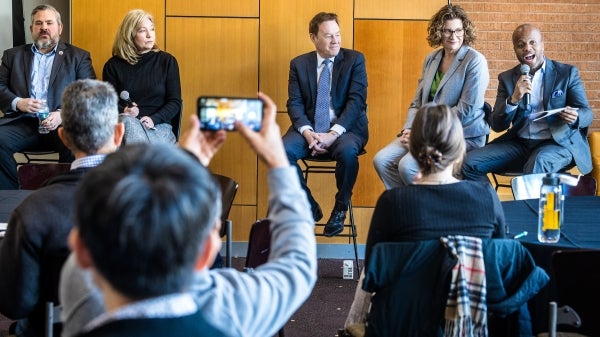
The state of water solutions
Water solutions and management must be efficient, affordable, forward-looking and leverage on innovation in order to support human progress and keep society running.This is according to Estelle…
